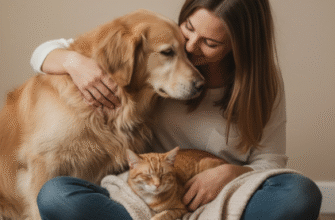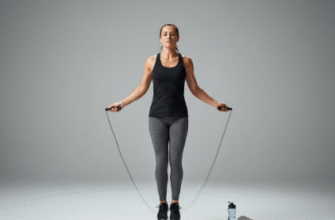We live in a world obsessed with projecting strength, perfection, and unwavering confidence. Especially when it comes to our bodies. We curate images, filter realities, and often feel immense pressure to present a version of ourselves that aligns with constantly shifting, often unattainable, ideals. Talking openly about our physical insecurities, the parts of us we feel awkward about, or the ways our bodies have changed feels taboo, like admitting a weakness. But what if embracing that vulnerability, that raw honesty about our physical selves, wasn’t a weakness at all? What if it was actually a hidden pathway to incredible strength and self-acceptance?
For so long, vulnerability has been mistakenly equated with fragility. To be vulnerable about our bodies – perhaps admitting discomfort with scars, stretch marks, weight, shape, or the simple process of aging – feels like opening ourselves up to judgment. We fear being seen as less than, as someone who hasn’t ‘got it together’. This fear keeps us locked in silence, often feeling isolated in our struggles, believing we are the only ones who feel this way about the skin we’re in.
Redefining What Vulnerability Means for Our Bodies
True vulnerability isn’t about broadcasting every insecurity to the world or seeking pity. It’s about acknowledging reality with honesty and openness, first to ourselves and then, perhaps, selectively with others. It’s dropping the facade. It’s admitting, “Yes, my body has changed after having children, and sometimes that feels strange,” or “This scar reminds me of a difficult time, but I’m learning to see it as part of my journey,” or even just, “Some days, I don’t feel comfortable in my skin, and that’s okay.”
This kind of honesty requires courage. It means sitting with discomfort instead of immediately trying to fix or hide it. It means accepting that our bodies are not static sculptures but dynamic, evolving landscapes that tell the story of our lives. Letting go of the need to project constant physical ‘perfection’ frees up an enormous amount of energy – energy we can then redirect towards appreciating our bodies for what they do, rather than solely focusing on how they look.
The Body as a Storyteller
Think about it: every mark, every curve, every change your body has undergone is part of your unique narrative. Stretch marks might speak of growth spurts or bringing life into the world. Scars can be reminders of resilience, of healing after injury or surgery. The lines on our faces map out years of laughter, worry, and contemplation. Even weight fluctuations tell a story – perhaps of periods of stress, periods of joy, or simply the natural ebb and flow of life.
When we try to erase or hide these markers, we inadvertently try to erase parts of our own story. Embracing vulnerability means learning to read these stories with compassion rather than criticism. It’s about shifting the perspective from seeing ‘flaws’ to seeing ‘evidence of a life lived’. This doesn’t mean we have to suddenly adore every single aspect of our physical selves overnight. It simply means acknowledging the reality of our bodies without harsh judgment, recognizing them as the vessels that carry us through our experiences.
Listening to Your Body’s Narrative
How do we start listening? It often begins with quiet observation. Pay attention to the sensations in your body without immediately labelling them as good or bad. Notice how different movements feel. Acknowledge aches or pains not as annoyances, but as signals. When you look in the mirror, try to look with curiosity rather than critique. What story is your posture telling today? What history do your hands hold? This mindful connection builds a foundation for accepting the body’s narrative, complete with its perceived imperfections.
Connecting with your body through gentle movement, like stretching or walking, can also deepen this understanding. It’s not about achieving a certain fitness goal, but about experiencing your body in motion, appreciating its capabilities, and fostering a sense of partnership rather than antagonism. The goal is to move from viewing the body as an object to be perfected to experiencing it as a living, breathing part of yourself.
Sharing Your Story (Carefully)
While the most crucial step is being vulnerable with yourself, sharing some of these feelings with trusted individuals can be incredibly powerful. It breaks down the walls of isolation and fosters genuine connection. Discovering that a friend also feels insecure about their changing body, or that a family member has learned to appreciate a feature they once disliked, can be profoundly validating. It reminds us that we are not alone in these very human experiences.
This isn’t about oversharing or complaining endlessly. It’s about choosing moments of authentic connection where sharing your feelings might resonate with someone else or simply allow you to feel heard and understood. Vulnerability, shared appropriately, builds bridges. It allows others to see the real you, beyond the curated exterior, and often encourages them to be more open themselves. It can transform relationships from superficial exchanges to deeper, more meaningful connections.
Important Note: Comparing your body journey to someone else’s, especially based on curated social media portrayals, can hinder your progress. Remember that vulnerability is personal. Focus on your own path to acceptance and choose carefully who you share your feelings with, ensuring it’s a supportive space.
Choosing Your Audience Wisely
Not everyone is equipped to handle vulnerability, yours or their own. Sharing deeply personal feelings about your body requires trust. Confide in friends, family members, or partners who have shown themselves to be compassionate, non-judgmental, and supportive. A therapist or a support group can also provide a safe and constructive environment. The goal isn’t universal approval, but connection and understanding within a trusted circle. Sharing with someone who consistently criticizes or dismisses your feelings will likely reinforce negative self-perceptions, undermining the strength you’re trying to build.
Vulnerability as a Catalyst for Self-Acceptance
Ultimately, allowing ourselves to be vulnerable about our bodies is a radical act of self-acceptance. It’s admitting that we are human, imperfect, and constantly evolving – and that this is not only okay, but beautiful. When we stop fighting our bodies and start listening to them, when we stop hiding our perceived flaws and start acknowledging our stories, we reclaim our power.
This doesn’t mean insecurities vanish overnight. It’s an ongoing practice. Some days will be harder than others. But by choosing vulnerability, by choosing honesty over pretense, we cultivate inner resilience. We learn that our worth is not tied to the smoothness of our skin, the number on a scale, or the absence of scars. We discover a strength that comes not from projecting an illusion of perfection, but from embracing the totality of who we are, body and soul. The strength found in vulnerability is quiet, steady, and deeply authentic – a foundation upon which genuine self-love can be built.
Letting go of the armor we wear to protect ourselves from judgment about our bodies can feel terrifying at first. But beneath that armor often lies a softer, more compassionate understanding of ourselves and others. It opens the door to relating to our bodies with kindness rather than criticism, and to finding a strength rooted not in societal approval, but in honest self-awareness. That vulnerability, paradoxically, becomes our shield and our power source.








